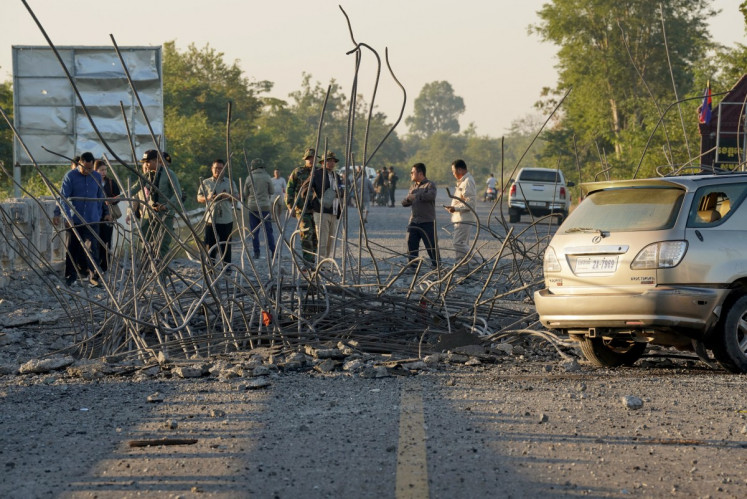Popular Reads
Top Results
Can't find what you're looking for?
View all search resultsPopular Reads
Top Results
Can't find what you're looking for?
View all search resultsRI’s outermost islands sinking under palm oil expansion
Indonesia’s outer islands that have peatlands are at risk of sinking due to the aggressive expansion of palm oil plantations
Change text size
Gift Premium Articles
to Anyone
I
ndonesia’s outer islands that have peatlands are at risk of sinking due to the aggressive expansion of palm oil plantations. This has prompted the government to try and restore the damaged peatland areas on the islands.
The Peatland Restoration Agency (BRG), tasked with restoring damaged peatland for the next five years, said the country’s outer islands were on the agency’s list of priority areas to be restored.
In Riau Islands, there are some islands, listed as outer islands, that have peatlands such as Tebing Tinggi, Bengkalis and Rangsang, according to BRG planning and cooperation deputy head Budi Wardhana.
“We know that palm oil expansion has been massive. Therefore, the islands that I mentioned are at risk. Bengkalis Island, for instance, is supposed to have 65 percent of its area protected, but there are so many palm oil plantations there, whether concessions or managed by local people on a small scale,” he said.
Budi said the sinking was caused by the subsidence of soil as the land dried up to make way for plantations.
“Peatland is like tea. When it’s dry, it will rise when water comes. So when the sea level falls, the peatland will be thrown out to the sea,” he said.
Likewise, Gadjah Mada University (UGM) swampland specialist Azwar Maas said the government should prioritize its restoration efforts in outer islands with peatlands as they were in danger of disappearing due to abrasions and subsidence.
“Sea water will come to peatlands and erode them. After that, the peatlands will go to the ocean,” he said.
The Environment and Forestry Ministry said the government had mapped outer islands with peatlands throughout the archipelago.
“We have West Sumatra, Bengkulu, Lampung and East Kalimantan. These are our areas,” the ministry’s environmental pollution and damage control director-general, Karliansyah, said.
The ministry will focus on restoring damaged peatlands on the BRG’s priority list as it will be easier if the ministry teams up with the agency.
“They’re doing restoration at 84 peatland hydrology areas in seven provinces. That’s why we’re asking for their data first so that there’s an agreement [on which areas should be prioritized],” Karliansyah said.
A map by the BRG reveals that 2.7 million hectares of peatland have to be restored over the next five years to prevent recurring land and forest fires. Out of 2.7 million hectares, 2.3 million, or 87 percent, are in concession areas.
The BRG has been able to map out which companies are responsible for the restoration of areas that have been damaged by years of peatland fires.
Most of them are agroforestry companies, with 217 palm oil companies operating across 589,000 hectares of restoration area.
And then there are 109 pulp and paper companies operating across 609,000 ha and 109 companies that produce natural forest products across 59,000 ha.
The BRG also plans to produce a 1:50,000 scale map to identify priority restoration areas and improve the zoning of peat conservation and cultivation areas. The agency has said it will prioritize its restoration attempts in badly damaged areas, such as those that have been burned more than three times.










